Where are we coming from, what have we observed in the crisis and what are practical measures and approaches for policy makers post-Covid to help build innovative solutions? An intermediate comment by Susy Silva (Lisbon), Dr. Steve Harding (Birmingham City University) and Dr. Bastian Lange (University of Leipzig/Multiplicities) after six months of global pandemic.
The text is a proposal how to co-design collaborative solutions for makerspaces in Europe. We have discussed ‘Collaborative Spaces and supporting policies in times of pandemic’ (in collaboration with CA18214 and RGCS) on October 6th 2020. Live on Facebook or COST-Website.
What have we observed in the crisis since March 2020?
The last six months have turned our world as we knew it upside down. Step by step, we have arranged us with the pandemic albeit its ongoing present danger and unknown long-term effects for all of us. Apart from health issues, the social and political induced effects have shaped our cities and regions and thus dynamized silent but steady changes in the lifeworld and urban fabric of our cities and neighbourhoods: Changed mobility patterns, different travel routes to avoid cramped public transports, increase online communication, emotional stress with big and unprepared institutions such as is the case with schools and companies. Abandoned life-plans, career changes, missing options and reduced income mark the way.
The effects of the pandemic have been considered as being universal at the beginning, thus turned out to be highly selective regarding income groups, social classes, generations, and geographies: Overcoming the pandemic on the rural countryside has not done much to the life rhythm of this everyday geographies, whereas living in large metropolis meant a lot of staying at home and in your apartment with significantly reduced action spaces.
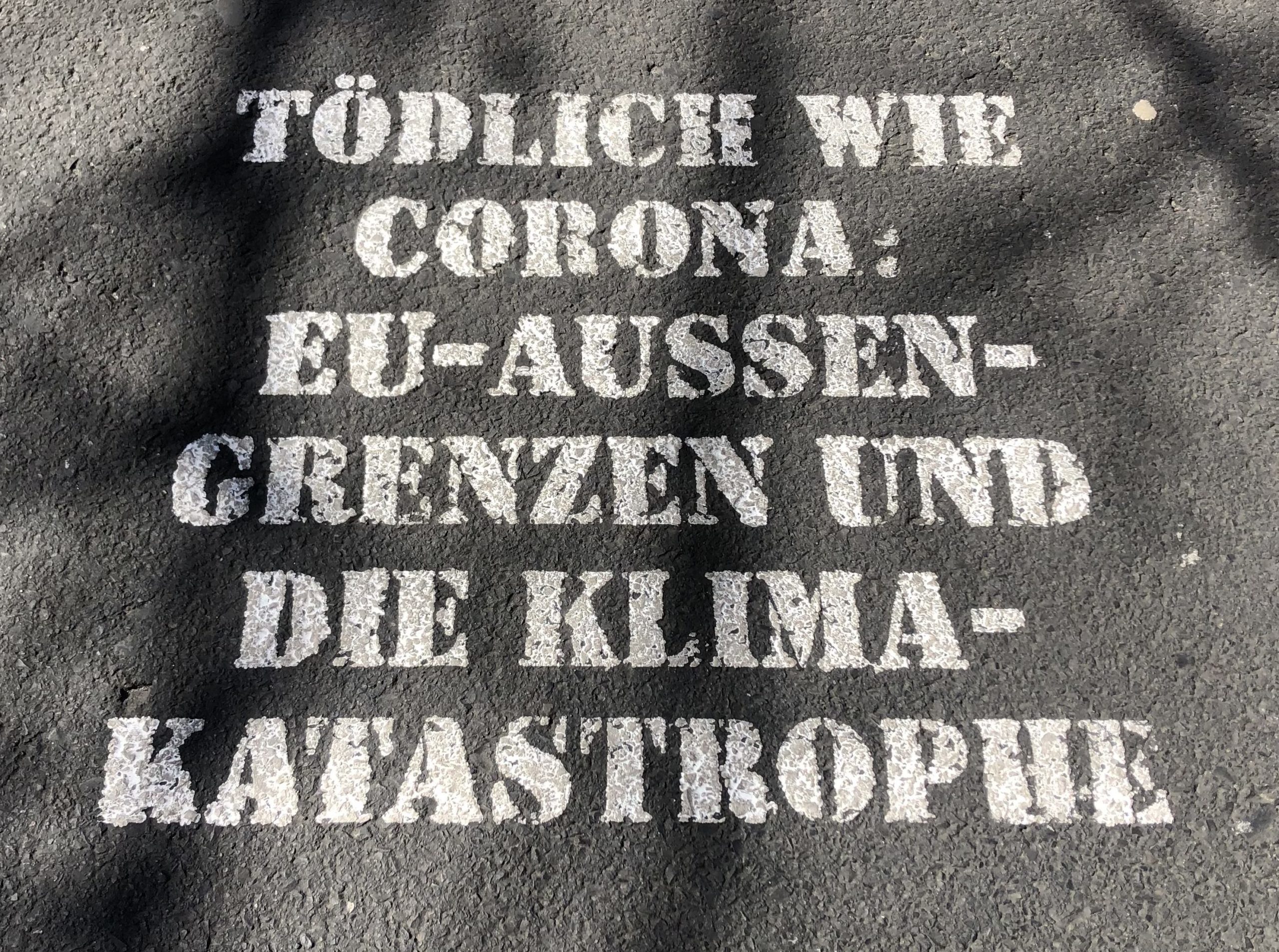
Global pandemic – geographically uneven effects of Covid-19
Despite the socially highly stretched and geographically diversified effects of the pandemic, we consider the building up after various forms of strong and soft “lockdown” phases as key for a reflective and more resilient society. In doing so, a shorthand “back to the normal past” is not helpful, because the pandemic has shown and intensified a lot of parallel running global crisis such as climate changes, heat waves with forest burnings, droughts, decimation of animal species, and forced migrations due to destroyed living spaces. If we want to build a better world in the near future, we have to avoid any attempts to “back to normality”.
Apart from these highly geographically uneven distributed negative effects around the globe, increased uneven knowledge basis also become obvious on various scales: Digital learning techniques might be highly uneven from school to school in one single Western metropolis, but differ as well between the global north and south. The same becomes obvious among heterogeneous age groups where seniors and silver-aged groups easily might end up in the trap of a cemented digital divide.
Policies in pandemic times: doing good and help for all – ignoring small-scale situations and the heterogeneity
Politics in pandemic times have reacted differently across Europe, mainly aiming at saving lives of risky groups. Underneath the radar of these top down politics, young adults, and less risky groups have been marginalized (read the text in our blog xy). The same takes place with fragile and small-scale places that have been considered to work for a promising future at the interface of institutional policies and social movements: Makerspaces, Coworking Spaces, Open Workshops, Creative Labs, FabLabs and even Urban Gardening projects stand for a changed relation of work, production, experimentation and ideation on the basis of shared values and collaboration.
As less-institutionalized relais between formal industry, knowledge institution and the state, these places demonstrated hope for a more human-oriented form of labour, for a more user-centred form of (less but then really needed) everyday goods, production, for a careful use of central resources such as ground, human and living time as well as some degree of humility in respect to our future planet.
To a large extent, these dimensions have been forgotten in the chaotic first weeks of the crisis when an attitude dominated the scene trying to quickly replace Face-to-Face habits with digital distanced based solutions. An attitude ruled this phased aiming at transferring all working and social routines from physical spaces to digital-virtual ones. So far so necessary.
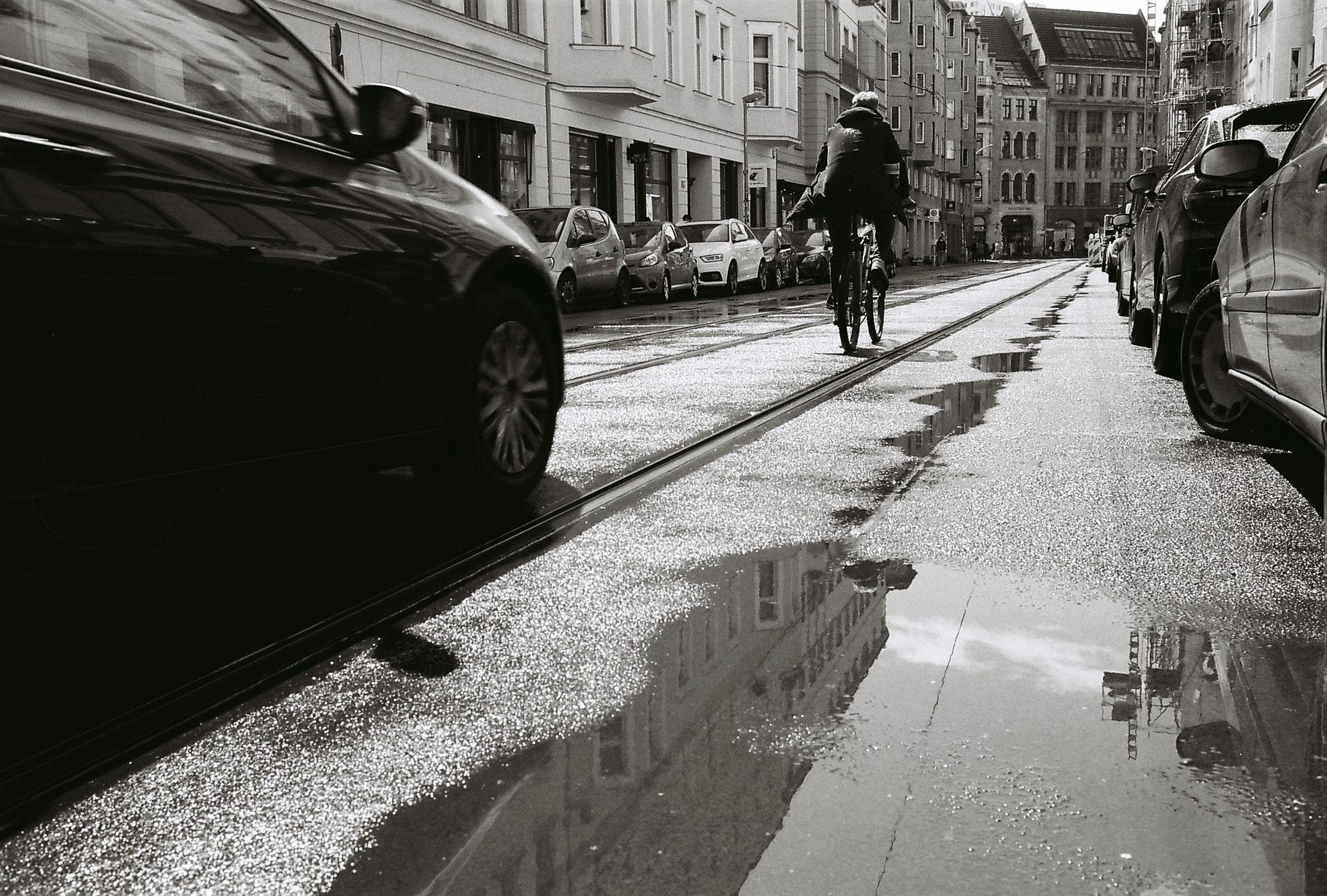
Dancing people, dancing policies? Toward a human centred notion of “innovation”
When infection rates increased in early summer, policy instruments – labelled by Pueyo as the “hammer” – were focussing on stabilizing system relevant economic, social, and state domains. While nobody would principally disagree, a huge selection process took place of what is relevant and what is not. From that phase onwards, all non-relevant actors and domains would need their own strategy to start “dancing”, following the metaphor of Tomas Pueyo (see medium.com, 20th of April).
The metaphor dance refers first of all to an everyday attitude of being aware that keeping social distance among people hinders spreading viruses. On an additional level, dancing as a practice refers to a form of unintentional though necessary behaviour and movement of bodies, minds, ideas, collectives and thoughts. This is a key attitude in experimental processes such as we can observe in mixed social and economic innovation places of Makerspaces, Coworking Spaces, Open Workshops, Creative Labs, FabLabs and even Urban Gardening projects. Here, temporary collectives and enthusiasts come together in order to test our ideas, share experiences, ideate how to overcome obstacles and prototype new ideas with new technologies. In doing so, formerly labelled old cultural techniques of making use of existing materials, habits, resources will be fruitfully combined with post-capitalistic demands.
Our mission in the last months was to showcase how spaces in niches and their communities struggled to remain on the radar of innovation processes, either as hubs for (social) entrepreneurship, problem solver, and idea giver for other economic and industrial spheres. Many of these spaces have gained relevance due to their multiplicity of potential cross-sectoral use.
For a wider understanding of culture in post-capitalistic transitions
If we start to shed light on the effective role of public policy domains supporting cultural, creative, and innovation processes, there is little to report so far. What we can report are numerous attempts of cultural policy makers, artists, cultural entrepreneurs and other intermediaries such as the Brussels-based consultancy office KEA.
They claim that “culture embodies human myths, stories (religion, ideologies, memories) and activities (art, design, architecture) which form a set of shared values, aesthetic and ideas facilitating social interactions and living together as a collective. Then, culture enriches humans as a form of knowledge, nourishing the mind, reinforcing the sense of belonging to specific roots and identity. Cultural activities mix reason, imagination and emotions, leading to creation encapsulating humans’ inner world and subjective realities. Culture finds its expression in poetry and beauty. It is an activity conducive to conviviality and well-being.” (see KEANET.EU, 16.09.2020).
In this respect, culture and creativity are considered as principles that regulate our future when it is about making use of new technologies for the purpose of the society and its challenges. Cultural policy is an enabler for making sense in especially turbulent Covid-19 times as we experience right now. The fear of spreading effects has had tremendous effects on theaters, cinemas, public concerts and the supporting people behind the scenes.
Designing transitions – value driven changes toward a better future
What we will need in the very near future is wider and open understanding of non-sectoral support policies. They have to feed into practical solutions for improving everyday situations of the people. The mechanism to do so has to be based on transparent policies, democratic values, and empowerment of small-scale niches, places and individuals. Cultural and creative policies have to be two-folded at least: First, they have to ensure diversity, innovation, cultural richness in the same way, as, second, they feed into solidarity, empathy, and collective learning for a post-capitalist world.
Based on design processes there are a range of policy actions which can be implemented to mitigate the economic and social impact effects of the virus. We want to expand them in regard to the Covid-19 pandemic conditions and focus on a refined methodology as well as on values that embrace co-creation, cooperation, respect, and solidarity. Especially those values have to be seen as a tremendous learning process in pandemic times, when they have been rediscovered again after many decades of neoliberal economic exploitation on our all social, natural, and human resources. We foresee the following approaches and actions to deal with in times of insecurity and almost no foresight.
The following measures can be seen as single approaches or more typically as a combination of policy responses to tackle specific circumstances. Together they form an array of instruments which can underpin inclusive growth enabling individuals and communities to prosper. The measures can be considered as part of a systems approach to sustainable economic development. They will help underpin strategy for policy makers to focus on their objectives.
Steps of a wider design-based transition toward human centred solutions
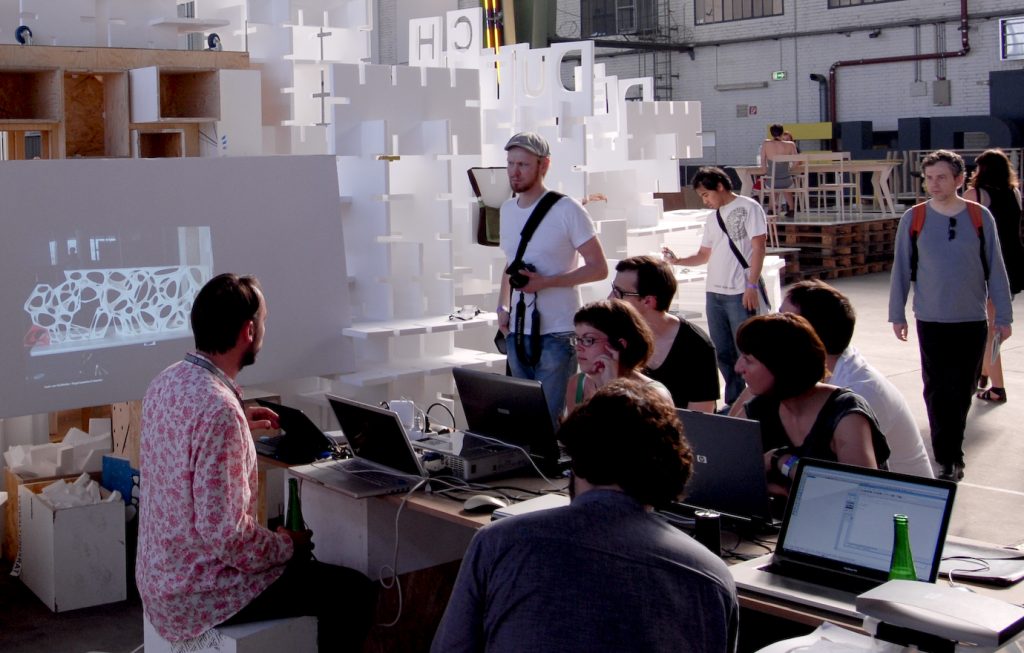
1 Labs
Labs are experimental spaces to test out new ideas. The emphasis is on developing new ideas with others. There is an event-based factor and can be based on physical spaces designated for this purpose. There are several distinct approaches to labs. Examples are:
Transition Labs – scientists and engineers working together on new developments to adapt for climate change mitigation.
Media lab Prado – Arts based organisations as a catalyst seeking new solutions with a range of entrepreneurs based on a “challenge” and curated by an expert team.
The Arts combined with engineering and science approaches, typically called STEAM approaches.
Digital Labs – A collaborative design approach is taking place on digital platforms and brings like-minded thinkers together solving problems. It requires good preparation and continues moderation.
Installing a Lab is first and foremost a bottom-up as well as private or public initiative to set up a social frame with a concrete location. It serves to create transparency, agenda setting, networks and visibility among like minded interested people.
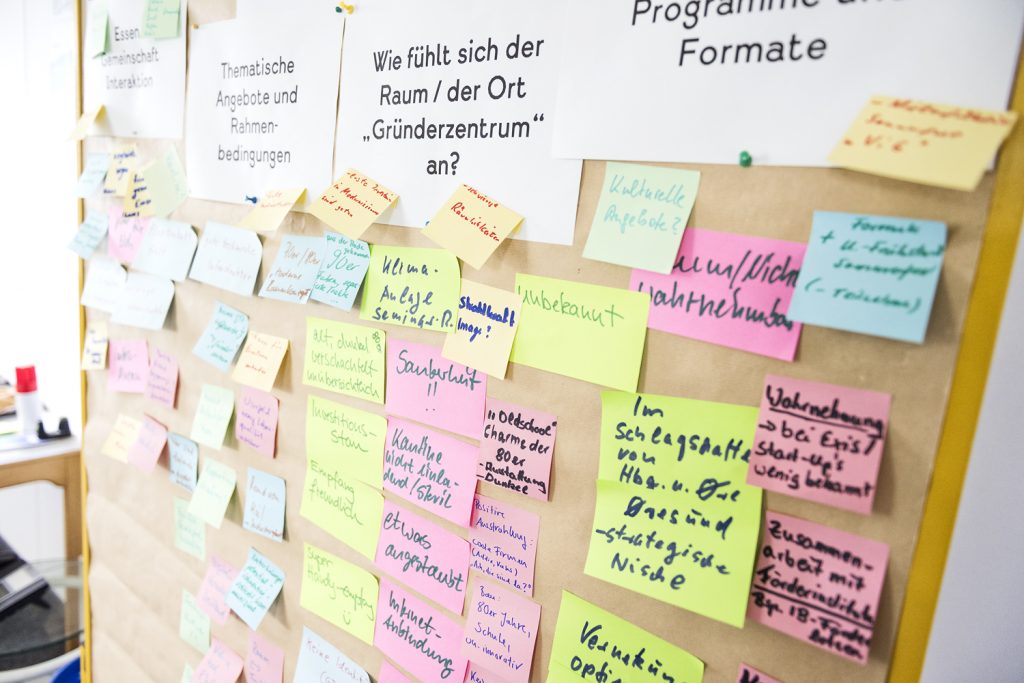
2 Design Thinking
Design thinking is a methodology with distinct stages – Empathise, Problem Definition, Ideation, Prototyping and Testing. It can be adapted to products, services and to the public sector. It has a joint though explorative agenda. It is centred on the needs of users and works on the basis of shared collective knowledge. It is quick and can speed-up action. It also makes fun and creates action out of chaotic, unsorted, and frozen situations. Examples of Challenge based approaches to co design solutions from a user perspective can be seen at:
Danish Design centre – Link
NESTA – Link
Case studies on Design for Europe – Link
THNK – Link
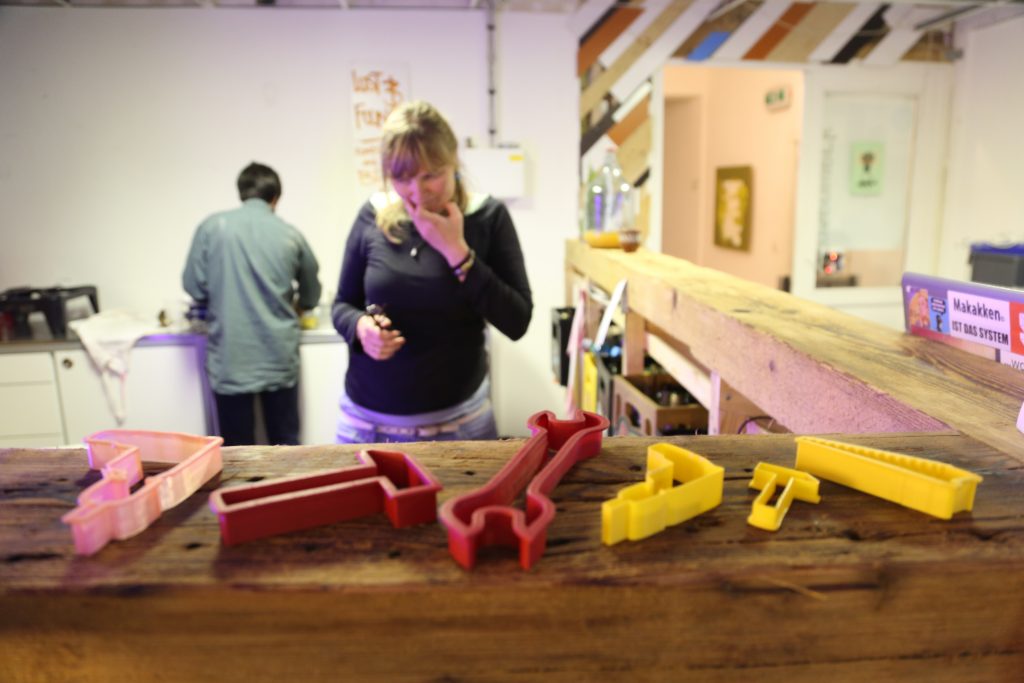
3 Pilot Actions
Pilot actions are a result of – e.g. a 1-2-day design thinking lab. They can be seen as a distinctive stage in the Design Thinking process – the development of prototype ideas as pilot actions. They can be temporary in nature, evaluated then potentially mainstreamed. The pilot action emerges out of an experimental though safe space to try out new ideas on the ground. Based on a joint action or a competition among SMEs, citizens and larger organisations – Lazio Innova as an example in the Rome city region (see www.lazioinnova.it).
Pilot actions showcase effect results out of a Lab and create immediate trust among sceptical stakeholders. They then have the chance to onboard and to join further actions. No one has to join; everybody can join at later stages when broader convincement on the Pilot Actions are spreading.
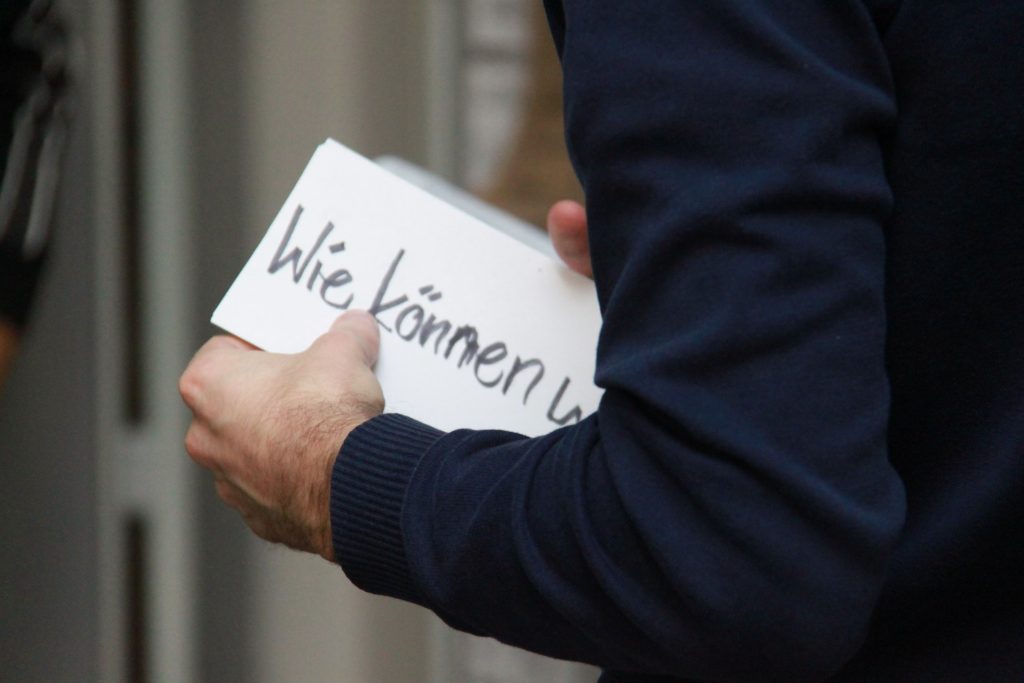
4 Sector Based approaches
Stakeholders and changemakers have to make a key decision where to go. Do we work with the idea of sectors or do we ask, where relevant knowledge and expertise comes from to solve societal problems in general?
Generally, we opt for a mixed form: Making use of sector competencies and combine it with external expertise and fresh views from outside the sector. Therefore, we would usually vote for a cross innovation approach from experience with working in other sectors. See our expertise and methodologies in www.cross-innovation.eu.
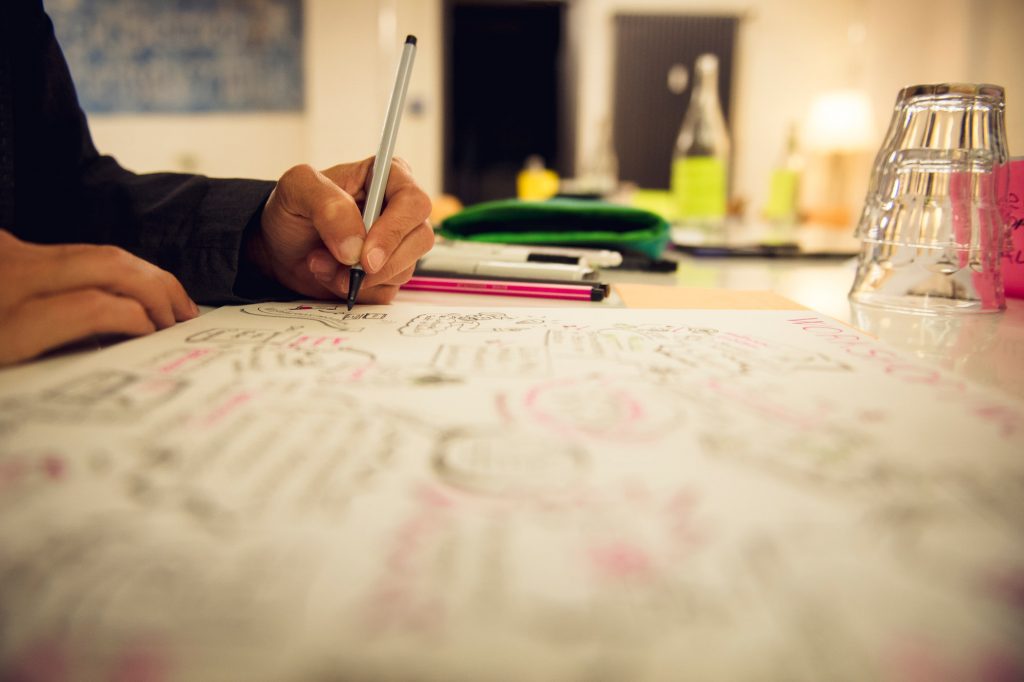
5 Policy Clinics and Peer Reviews
The policy clinic and peer review are methods for a city authority or similar to pair up with 2-3 other cities and explore policy approaches to common problems. Each city acts as a critical friend to the other. The peer review is then an in -depth process for a specific policy action chosen by the cities from the wider policy clinic discussions.
In addition to the policy clinic and the peer reviews, “remote study visits” can be a feature of the Policy Clinic giving a visual aspect to the exchange of experience. It creates in-depth experience out of the usual box at new places. What formerly has been labelled “excursion” is nowadays an appropriate means to cross-check own views, to interact with like-minded collaborators, and to gain new insights “how to do things”.
Policy Clinic Final Report Urban M (PDF)
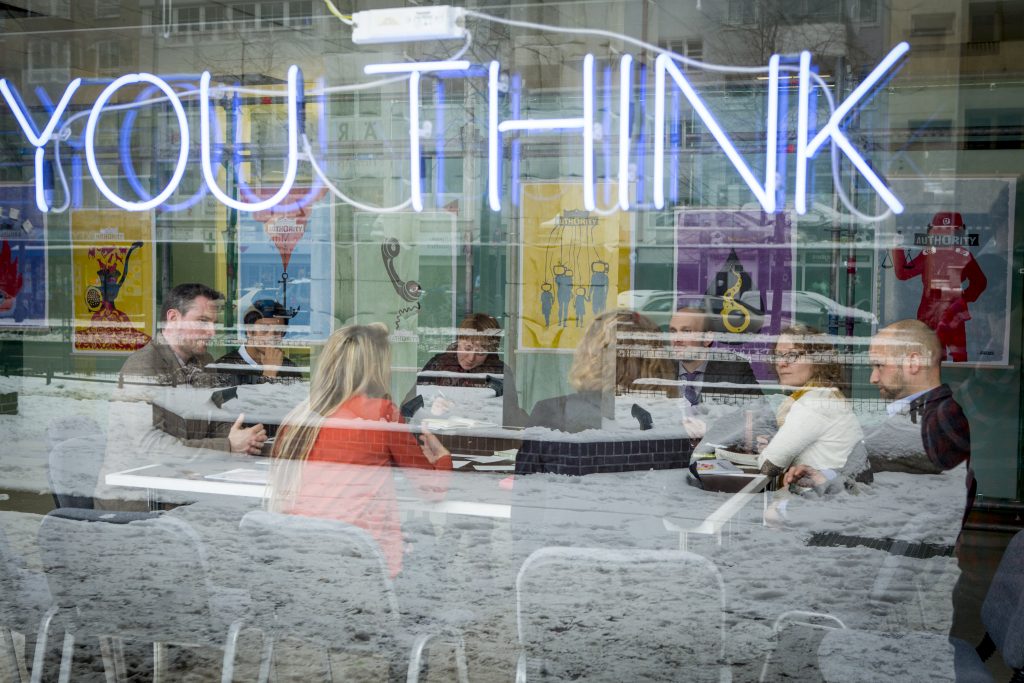
6 New Combinations and Organisations
Everything novel does not necessarily fit into the categories and institutional frames of the past. Policy and change makers may decide to set up new organisational forms to tackle complex issues.
This approach involves establishing organisations to catalyse change and brings in a range of stakeholders. WAAG Amsterdam is a current example.
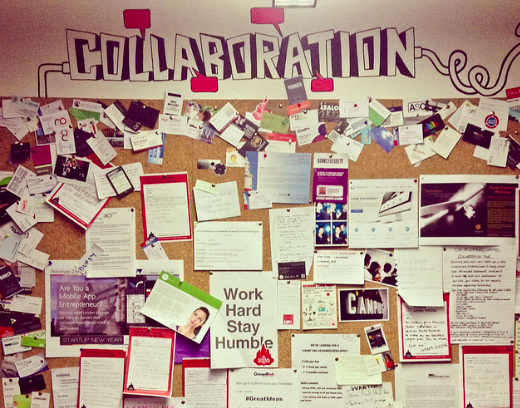
7 Hack events
Such events tend to have an emphasis on digital solutions as their antecedents are in the tech sector. Data driven events can focus a range of organisations sharing approaches and data to better meet societal challenges. SME focus and participation are a key element here.
Sand pit approaches for testing new ideas and prototypes are another variation of the “hack” where larger organisations release/share prototypes with SMEs to take to the next stage. Citizen driven hacks are another aspect – grass roots emphasis to address a community need. See the case of Lisbon Greene Hackathon (FB).

8 Maker spaces
Maker spaces given their informal and community- based approach are another example where ideas can be tested, and prototypes made. Maker spaces can be linked to the green economy and up-cycling, taking an ethical view and experimental spaces for re-use and social good as tangible benefits. Maker Spaces sit well in innovation ecosystems and in citizen-based community networks. See our recent project Urban Manufacturing – Urban M (Web).
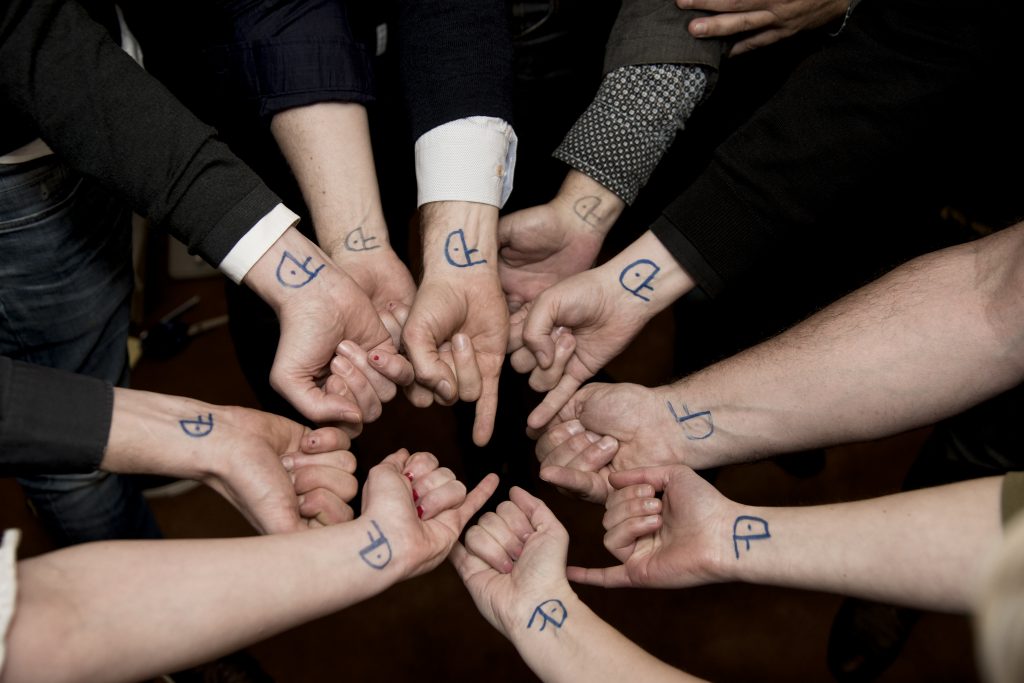
9 Start up events and support networks
Ideation, new ideas, prototyping within the frame of a Lab, a Hackathon, a creative process. This is all well, but continuation and the long durée is key. In order to make use of the kick-starting attempts, a broader innovation ecosystem has to be established.
It can nurture the next steps for entrepreneurs through seminars, workshops and 1:1 business mentoring. Examples are Betahaus in Berlin and Mouraria Creative Hub (FB).
Creativity is contagious, pass it on.
Albert Einstein
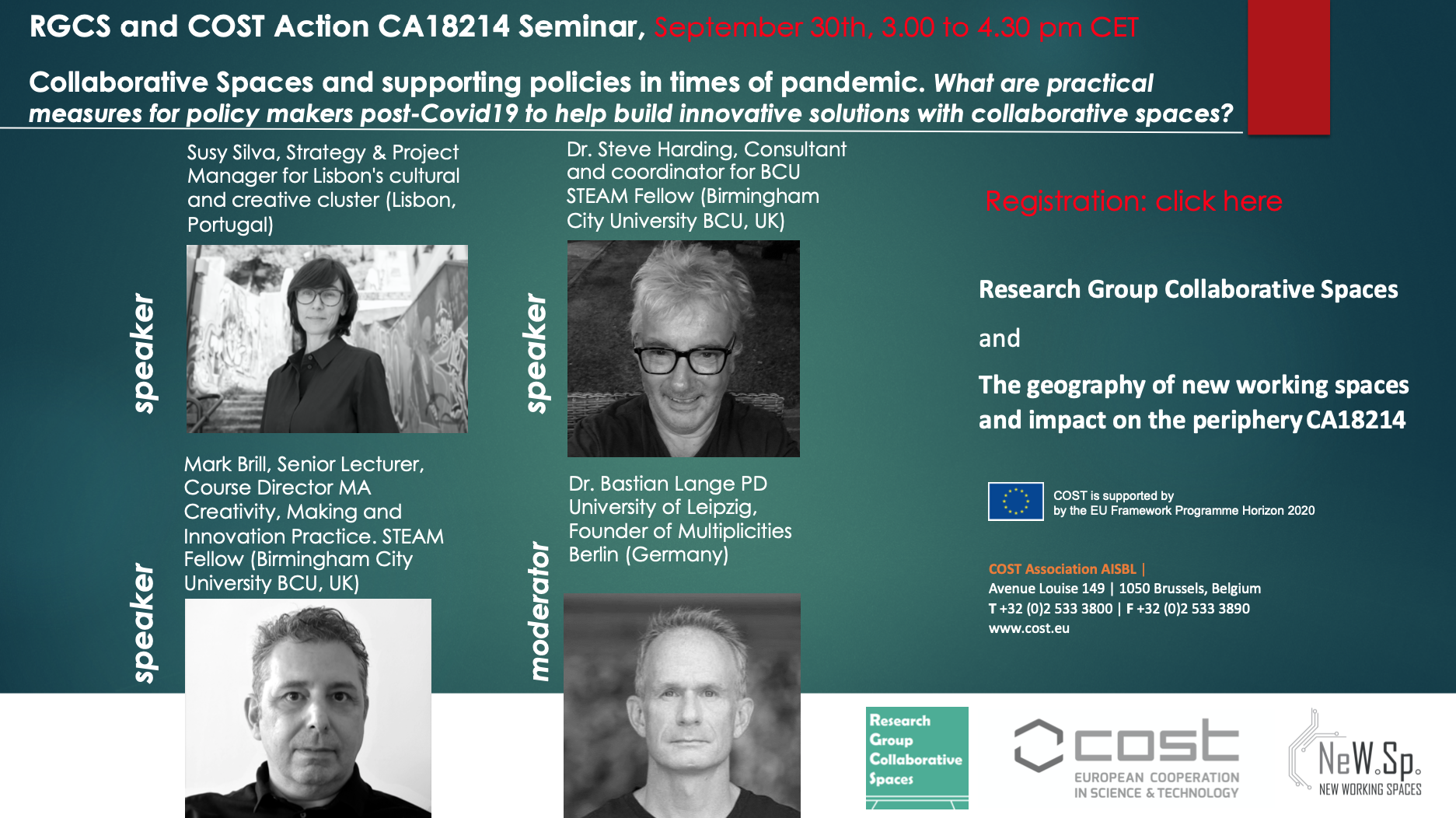
10 Think pieces and learnings from our Open Seminar, October 6th 2020
In cooperation with the COST ACTION CA 18214 and RGCS, we have discussed solutions and ways how makerspaces and its communities could be part of solutions in pandemic times. See the stream at Facebook.
Makerspaces are often closed and so we asked how its members and communities could be activated again in a safe way? Three approaches have been presented:
- Safe, emotional as well as empathy driven experiences are needed in order to re-connect makers, policymakers, community members and interested folks.
- Experimental encounters “out of the (makers) box” such neighborhood walks, open walks, short urban excursions could bring people together in safe environments. See the tools of RGCS.
- Open walks are a kind of meandering informal social space within the given public space of a city or a village. Participants can join and chat again in safe context.
Thinking further, bridging geographical distance needs new tools and instruments that allow collaboration over distance.
- We will need additional tools to boost creativity on a distanced base. Such as at Becreative or Miro or Mural.
- Apart from digital tools, the analog world requires more attention in order to be mobile and to be able to save costs for people with less-income in pandemic times. Practical infrastructure like repairing of everyday goods, mobility tools, bikes, roller blades and transport gears are needed and can be found in state-funded actions as e.g. in Scotland. A temporary repair café as a service of makerspaces could be a bridge between the makerspaces, its community and the wider general public.
Although the Covid-19 health risks and its state-imposed restrictions have led worldwide to anger, fear, and depressions, the talk with Mark, Susy, and Steve have been very enthusiastic about the potential role of Makerspaces: In short, we started thinking big. The following ideas and views popped up:
- Why not re-imagining coworking spaces to include in educational practices “out of the box”, health and wellbeing services and play spaces for kids and young adults?
- This could lead to apply more cross-innovation spaces where makers, citizens and entrepreneurs develop new solutions to community problems.
- We suggest not to wait for top-down solutions from our leaders, but to create Innovation processes with local creative communities itself to address new jobs, clients and challenges (creative laboratories, knowledge transfer, policy clinics…).
- Of course, this needs more agile public policies for action – fostering collaborative engagement for better and faster outcomes: If you work and act as a node in a network with a bottom up approach from the communities, small scale solutions will appear and will do good for the community.
- An Afterword: In pandemic times, optimism is rare. We are realists and work hard for a prototypical use-case that will show-case what is possible. We will let you know soon.
